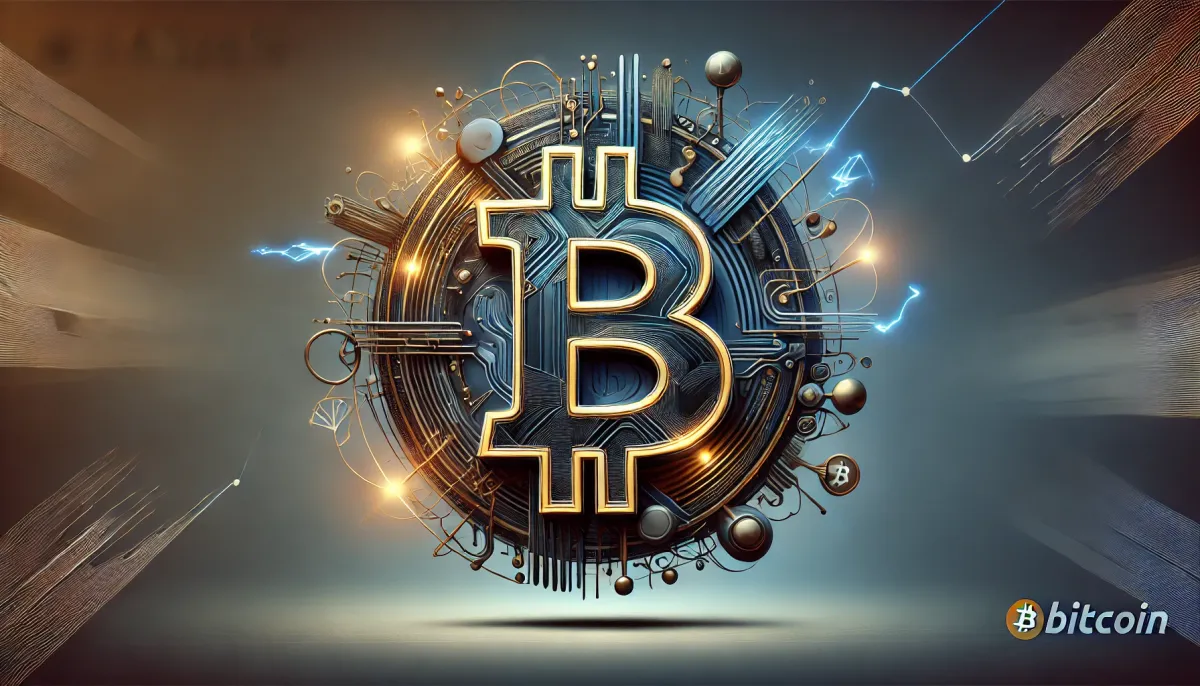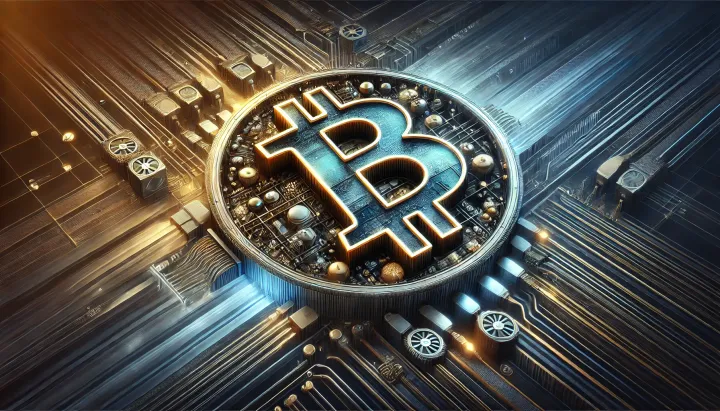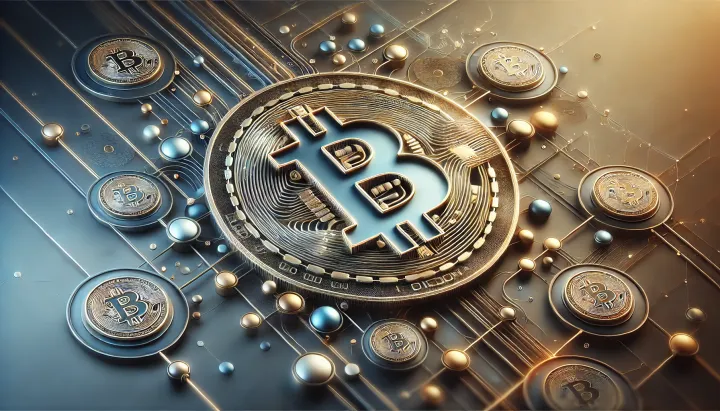Enhancing Bitcoin Mining and Decentralized Payments with the Lightning Network
The September 20, 2024 episode of The Bitcoin Source features Jesse Shrader, CEO of Amboss, who explores how the Lightning Network is transforming Bitcoin mining by improving payout efficiency and enhancing decentralized payment systems.

Briefing Notes
My 'briefing notes' summarize the content of podcast episodes; they do not reflect my own views. If you have comments about this briefing note, please leave a comment below (requires signing up for a free blog subscription). Note that some of the podcast episodes I summarize may be sponsored: don't trust, verify, if the information you are looking for is to be used for decision-making.
Summary
The September 19, 2024 episode of The Bitcoin Source features Jesse Shrader, CEO of Amboss, who explores how the Lightning Network is revolutionizing Bitcoin mining by improving payout efficiency, particularly for small-scale miners. The Lightning Network’s ability to lower payout thresholds boosts miners' cash flow while supporting decentralized and private transactions. The discussion also covers the regulatory challenges, user experience barriers, and the broader implications of these advancements for the Bitcoin ecosystem.
Take-Home Messages
- Lightning Network improves miner payouts, offering daily payments and enhancing the financial sustainability of small-scale miners.
- Amboss’s Magma platform facilitates strategic Lightning Network connections, enabling users to optimize payment channels and earn revenue.
- User experience is a key barrier to Lightning Network adoption, particularly for businesses without technical expertise, highlighting the need for simplified interfaces.
- Rising Bitcoin transaction fees are driving demand for Layer 2 solutions like Lightning, which offer fast, private, and cost-efficient alternatives to on-chain transactions.
- Regulatory scrutiny in the U.S. is creating challenges for Bitcoin wallets and payment providers, making it essential to find strategies to ensure compliance while preserving decentralized principles.
Overview
The September 20, 2024 episode of The Bitcoin Source highlights how the Lightning Network is transforming Bitcoin’s mining ecosystem by enabling more frequent payouts for miners. Host Dawdu Amantanah and Jesse Shrader, CEO of Amboss, discuss how small-scale miners, who often face financial barriers due to long payout delays, can now receive daily payments through Lightning, enhancing their cash flow and making Bitcoin mining more accessible to individuals with limited resources.
In addition, Shrader explains how Amboss has developed a range of tools, including the Magma marketplace, to support the strategic use of the Lightning Network. By optimizing connections between nodes and allowing users to buy and sell payment channels, these tools help users enhance their mining and transactional operations. Data analytics is integral to this process, providing insights into how best to navigate the decentralized system.
The conversation also addresses the challenges facing Bitcoin, particularly in light of rising transaction fees and regulatory pressures. Shrader mentions how some wallet providers have pulled out of the U.S. due to fears of enforcement actions, potentially limiting miners’ options for receiving payments. Finally, the discussion touches on privacy concerns, scalability issues, and the need for user-friendly platforms to encourage broader Lightning Network adoption.
Stakeholder Perspectives
- Small-Scale Miners: Benefit from frequent payouts via Lightning Network, improving cash flow and operational sustainability.
- Bitcoin Wallet Providers: Face increased regulatory challenges, especially in the U.S., potentially limiting their ability to operate and serve miners effectively.
- Businesses: Require more user-friendly Lightning Network solutions, as many lack in-house technical expertise to implement decentralized payment systems effectively.
- Policymakers: Must balance regulatory oversight with the need to foster innovation in decentralized systems like Bitcoin, ensuring that regulations do not stifle growth.
- Developing Regions: Stand to benefit from global Lightning Network adoption, but require significant infrastructure improvements to take full advantage of the system.
Implications
The integration of the Lightning Network into the Bitcoin mining ecosystem has important implications for both miners and the broader Bitcoin community. For miners, especially small-scale operators, the ability to receive frequent payouts enhances financial sustainability by addressing cash flow concerns. This could lead to increased participation in Bitcoin mining, further decentralizing the network and promoting its long-term viability.
However, the podcast also raises important regulatory concerns. In the U.S., increasing scrutiny is creating uncertainty for wallet providers and payment platforms, leading some to withdraw from the market. This may limit the options available to miners and users who rely on these platforms for managing Lightning payments. To ensure continued innovation, policymakers must carefully balance the need for oversight with the preservation of Bitcoin’s decentralized nature.
Future Outlook
As transaction fees on the Bitcoin blockchain continue to rise, the Lightning Network is expected to play an increasingly important role in ensuring that Bitcoin remains a viable and scalable payment system. By enabling low-cost, fast, and private transactions, Lightning can address many of the inefficiencies present in traditional financial systems. However, significant improvements in user experience and regulatory clarity will be required to encourage broader adoption of Lightning, particularly among small businesses and non-expert users.
The Lightning Network could have broad applications beyond mining, especially in sectors that require fast, low-cost global transactions. As the network continues to evolve, it could become a cornerstone of Bitcoin’s future as a universal and neutral payment system, driving greater adoption and enhancing its utility for everyday transactions.
Information Gaps
- How can the Lightning Network be further optimized to reduce payout thresholds for small miners? This question addresses the need to make mining more financially viable for small-scale operators, which could promote greater decentralization in the network.
- How will U.S. regulatory actions impact the broader Bitcoin ecosystem? Given the increasing regulatory scrutiny in the U.S., understanding how these actions will shape Bitcoin-related technologies is essential for future innovation.
- What are the most effective design improvements needed to make Lightning Network adoption easier for non-expert users? User experience is a key barrier to Lightning adoption. Identifying effective design changes could drive broader use beyond technically proficient individuals.
- What will be the long-term effects of increasing Bitcoin transaction fees on Layer 2 adoption? Rising fees may shift user behavior toward Layer 2 solutions like Lightning. Understanding the long-term impacts could help shape strategies for promoting these solutions.
- What are the primary infrastructure challenges hindering global adoption of the Lightning Network, particularly in developing regions? Infrastructure development is critical for ensuring that the benefits of the Lightning Network reach underserved populations and regions globally.
Broader Implications
Global Financial Accessibility
The Lightning Network’s low-cost, fast transactions can dramatically expand financial access to unbanked populations worldwide. As Bitcoin becomes easier to use for microtransactions, it could challenge traditional remittance systems, reducing fees and improving speed. This shift could foster greater Bitcoin adoption in developing regions, where access to traditional financial services is limited.
Regulatory Shifts and Bitcoin Neutrality
As regulatory scrutiny intensifies, decentralized platforms like the Lightning Network may force policymakers to reconsider traditional financial regulation frameworks. Lightning’s ability to maintain privacy while improving transaction efficiency could become a focal point for future regulatory debates. Striking the right balance between oversight and decentralization will be critical to ensuring Bitcoin’s neutrality and widespread adoption.
Bitcoin as a Medium of Exchange
With the Lightning Network addressing Bitcoin’s scalability issues, the broader implication is that Bitcoin can transition from a store of value to a practical medium of exchange. As transaction fees on the Bitcoin blockchain increase, more users may rely on Lightning for everyday payments, accelerating this transition. This would position Bitcoin as a competitor to traditional payment networks like Visa and Mastercard on a global scale.



Comments ()